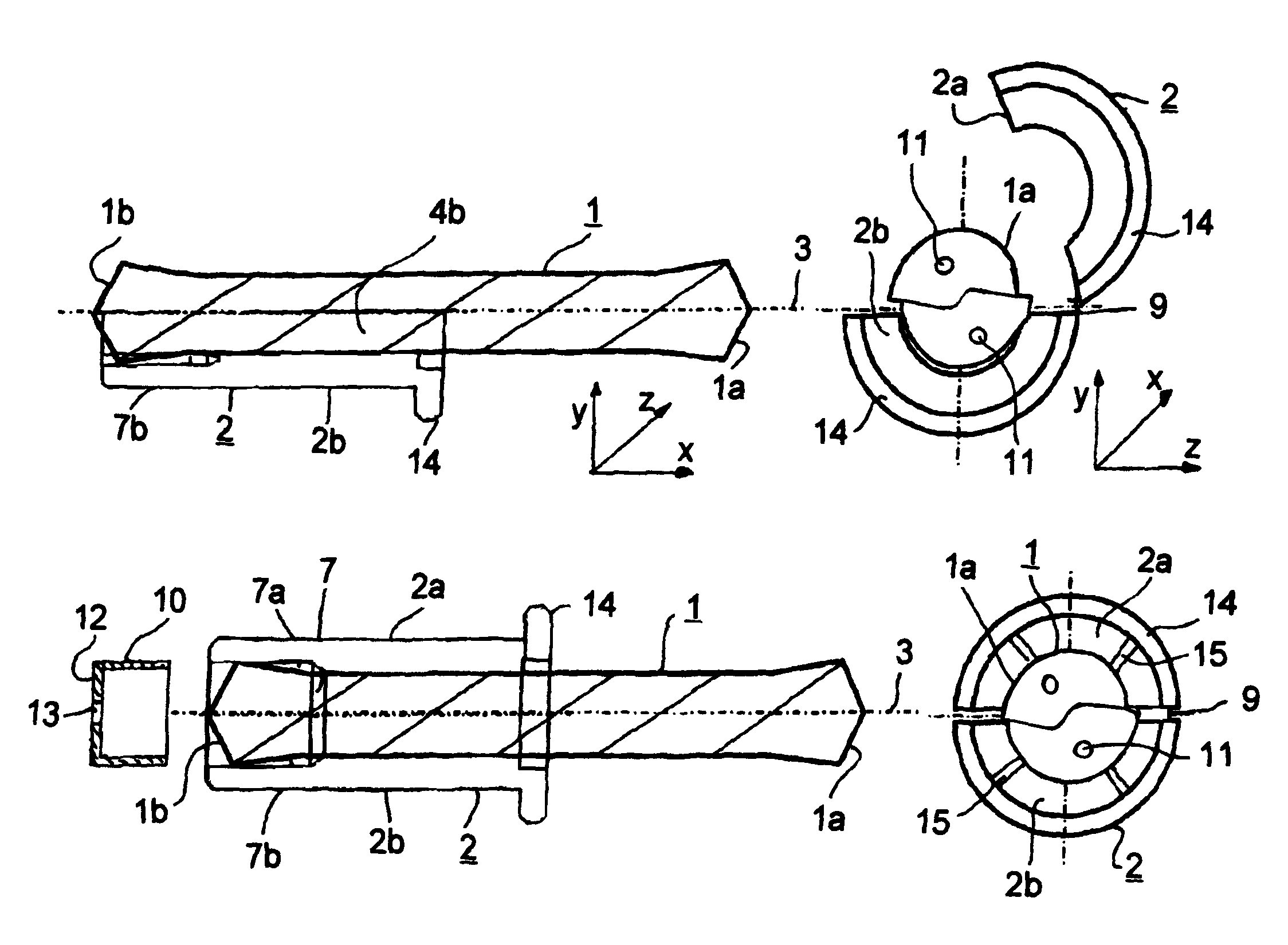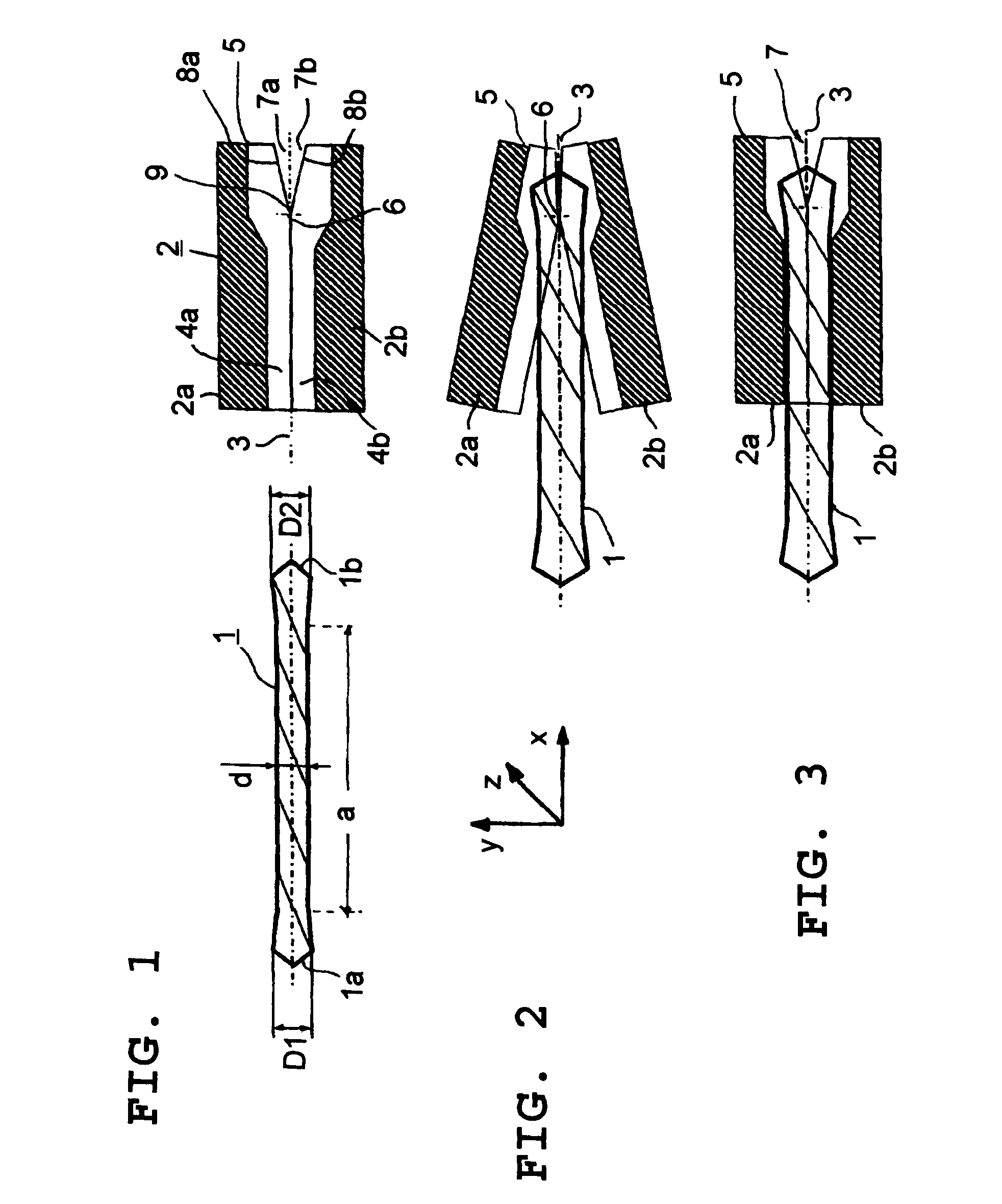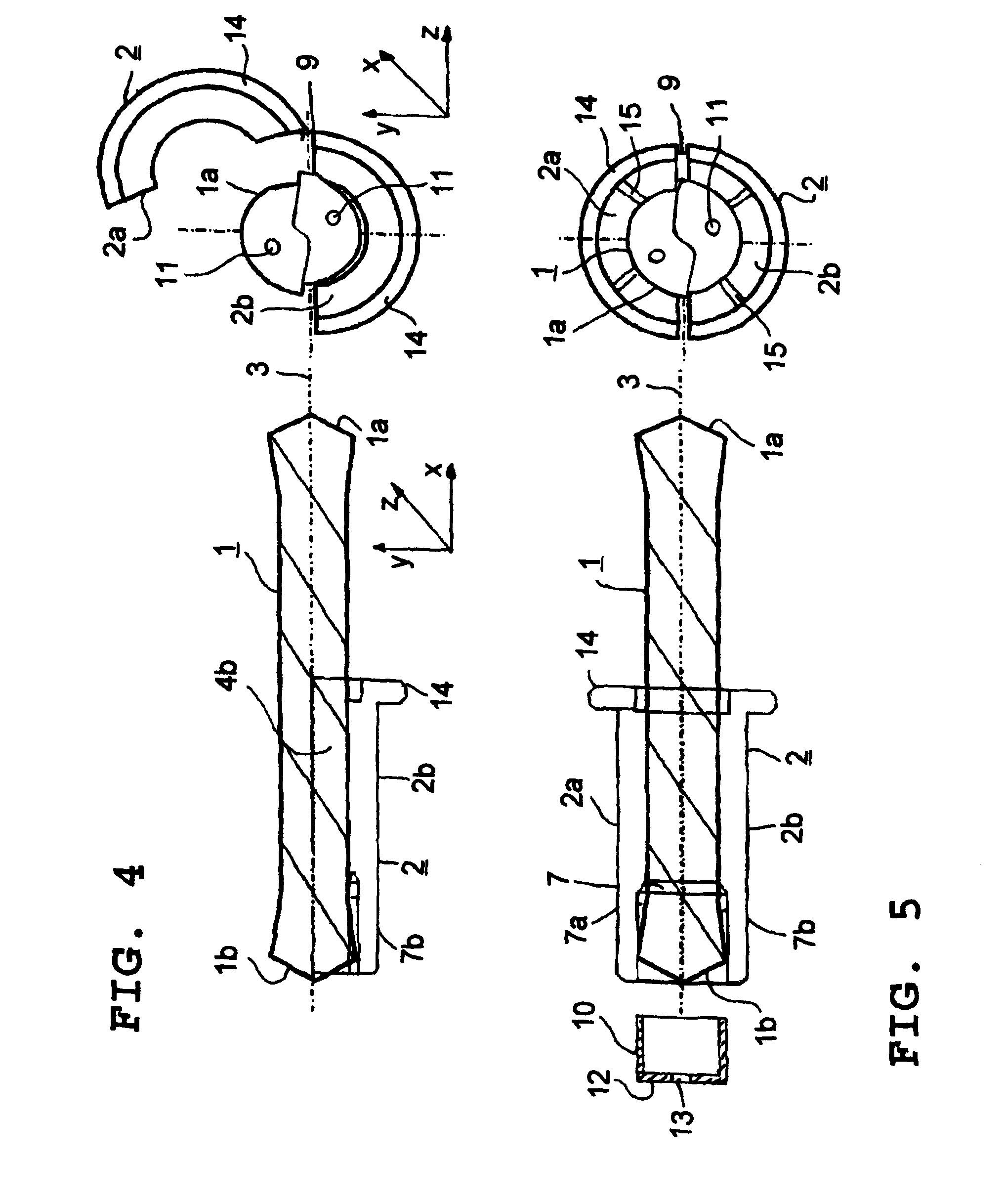Combination of the chucking device and a drill and a chucking device for a drill with cutting tips on both ends
a chucking device and drill technology, applied in the field of can solve the problems of unavoidable manufacturing tolerances, increased external diameter, and inability to use chucking devices for drill tools, and achieve the effect of easy and safe clamping
- Summary
- Abstract
- Description
- Claims
- Application Information
AI Technical Summary
Benefits of technology
Problems solved by technology
Method used
Image
Examples
Embodiment Construction
[0042]FIG. 1 shows a drill tool 1 comprising one drill tip 1a, 1b, each at every end, with a drill diameter D1 or D2 increasing towards the drill tips 1a, and 1b. Along a middle section of the drill a the diameter d of the drill tool 1 is constant. Diameter d may be 1 or d2, with D1=D2 or D1≠D2. An adapter sleeve 2 that serves to house the drill tool 1 is embodied in two parts. For this, the adapter sleeve 2 comprises two shells 2a, and 2b, that can be pivoted crosswise to the longitudinal axis of the sleeve running in the x direction.
[0043]As is evident from FIG. 1, the two shells 2a, and 2b, of the adapter sleeve 2 form a hollow cylinder featuring a cylindrical outer circumference. To accommodate the drill tool 1 said hollow cylinder develops suitable cylinder paths 4a, and 4b, of the shells 2a, or 2b respectively. The two shells 2a, 2b, can be opened wedge or V-shaped in y direction at a sleeve end 5 around a pivoting axis 6 running in z direction and thus crosswise to the longit...
PUM
| Property | Measurement | Unit |
|---|---|---|
| diameter | aaaaa | aaaaa |
| diameter | aaaaa | aaaaa |
| diameter | aaaaa | aaaaa |
Abstract
Description
Claims
Application Information
 Login to View More
Login to View More - R&D
- Intellectual Property
- Life Sciences
- Materials
- Tech Scout
- Unparalleled Data Quality
- Higher Quality Content
- 60% Fewer Hallucinations
Browse by: Latest US Patents, China's latest patents, Technical Efficacy Thesaurus, Application Domain, Technology Topic, Popular Technical Reports.
© 2025 PatSnap. All rights reserved.Legal|Privacy policy|Modern Slavery Act Transparency Statement|Sitemap|About US| Contact US: help@patsnap.com



